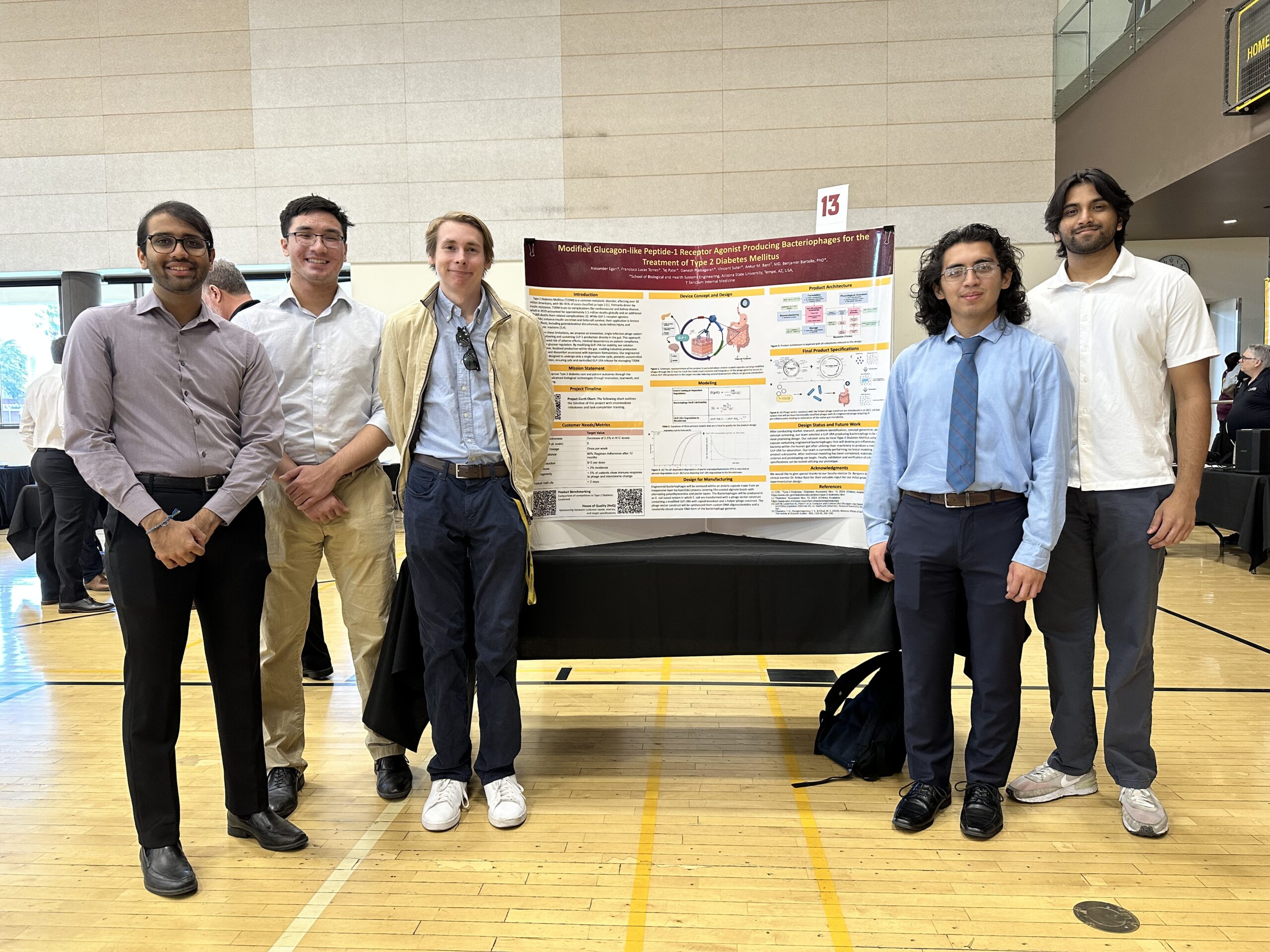
GLP-1 Phage Design
Biomedical Engineering
Alexander Egan, Tej Patel, Ganesh Prabagaran, Vincent Suter, and Francisco Lucas Torres
Abstract
Glucagon-like peptide-1 receptor agonists (GLP-1RAs) are medications used for managing blood sugar levels in Type 2 diabetes. However, these treatments often cause unwanted side effects like nausea and stomach discomfort, have unpredictable side effects in different individuals, and require injections, making them often a challenge for patients to adhere to. Our flagship product addresses these problems by developing a system that uses bacteriophages – viruses naturally found in bacterial populations that can target specific bacteria. By genetically modifying these bacteriophages, we aim to utilize proinflammatory gut bacteria to produce a GLP-1RA therapeutic for absorption in the small intestine, targeting Type 2 diabetes from both microbiotic and pharmaceutical angles. Our product had two main objectives. First, we engineered bacteriophages to produce GLP-1RA peptides. Second, to ensure the bacteriophages can only infect bacteria once, we performed a coat protein knockout, removing their ability to produce infectious virions. This controlled infection strategy prevents uncontrolled multiplication, safeguards the microbiome, and allows careful dosage control. This approach aims to simplify treatment by replacing injections with a convenient oral capsule, potentially increasing patient comfort and compliance. By targeting implicated harmful bacteria, producing an effective therapeutic, and overcoming problems with industrial GLP-1RA production and storage, this method may significantly improve therapeutic outcomes, reduce side effects, and provide a practical, gut-focused solution for effective blood sugar management.
Video
Research poster
Health